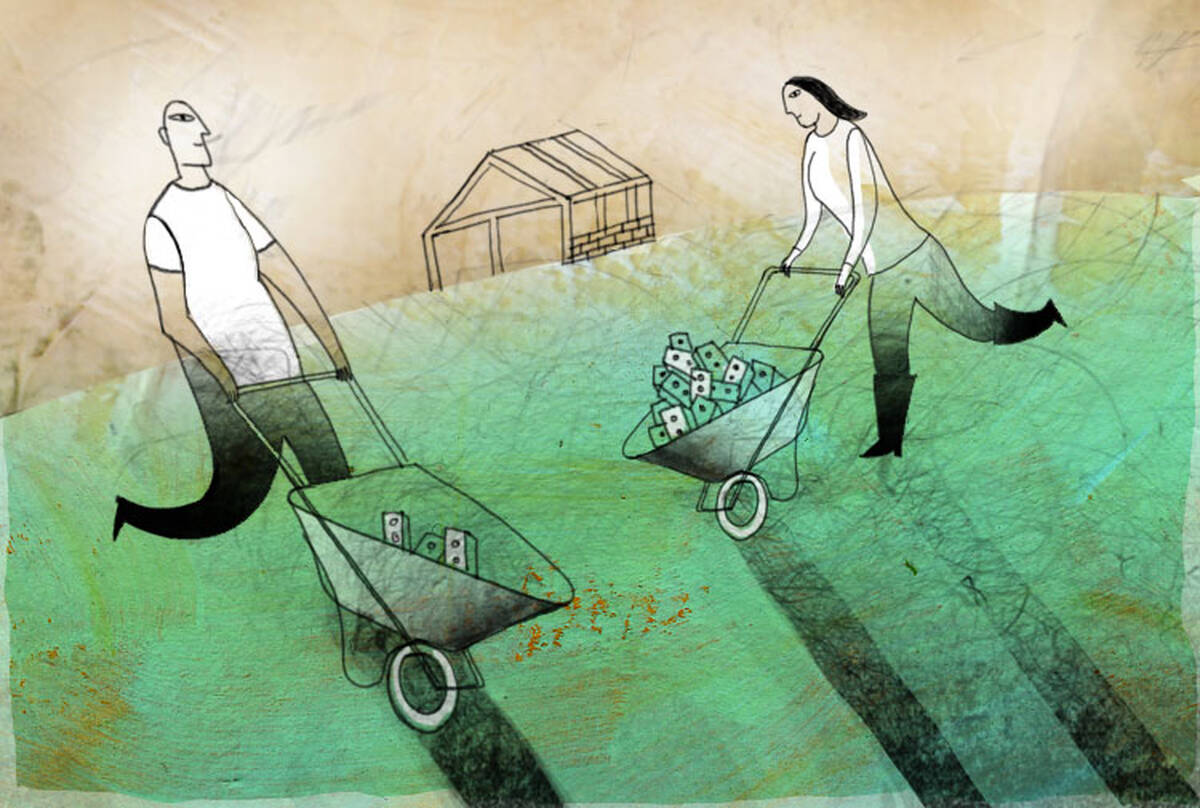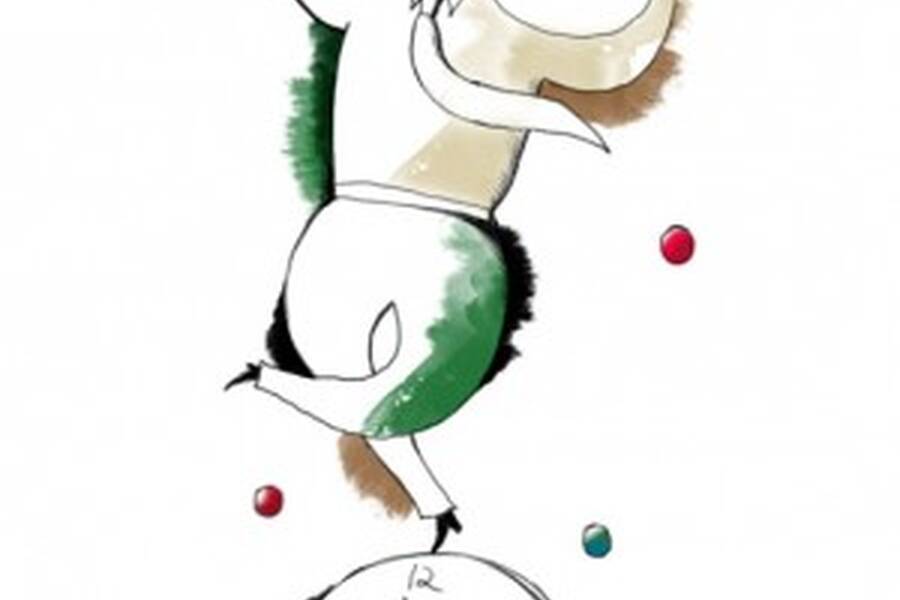
Yevgenia Nayberg
From bringing a medical device to market to cutting global emissions, few truly complex challenges can be solved by a lone individual working late into the night.
But collaborations also have their downsides, including one that economists have long tried to eradicate: the free-rider problem. “Any time you have two or more people working together, each acting in his or her own best interest, they behave less efficiently than if they were working alone,” says George Georgiadis, an assistant professor of strategy at the Kellogg School.
This is because what is best for the group tends to differ from what is best for each of us. Individually, we want to enjoy the fruits of our team’s labor, but we aren’t as keen to incur the costs. In other words, as Georgiadis puts it, “because I only care about my benefits and costs—that is, I do not internalize the benefits of my labor to the other team members—I am going to do less work.”
In a new mathematical model he developed with colleague Jakša Cvitanić, Georgiadis proposes a clever way of getting around the free-rider problem, particularly for somewhat involved collaborations that unfold over time. The researchers’ solution can be used in business collaborations to ensure that teams work together efficiently. But it also offers a way to combat thorny political issues involving the free-rider problem, such as how countries share the responsibility of curbing greenhouse emissions or preventing the overharvesting of resources.
“You have inefficiencies when individuals act in their own interest, to the detriment of everyone,” says Georgiadis, “and the objective of our article is to design a mechanism that eradicates those inefficiencies.”
A Model of the Free-Rider Problem
At its heart, the drive to minimize our own effort—the source of the free-rider problem—is deeply ingrained in us.
When we tackle an incline on a treadmill, for instance, our brains automatically adjust our posture and gait to expend the least amount of physical energy possible on the climb.
The same idea extends to our jobs. If we know we can get away with putting forth less effort, we will be tempted to take advantage of the situation to conserve mental energy.
Georgiadis and Cvitanić suspected that putting something tangible on the line—such as cash—might encourage everyone to behave in ways that are efficient for the whole group, rather than just for themselves.
They formulated a theoretical situation in which everyone working on a long-term project contributes incremental fees to a third party until the entire project is complete. Then, and only then, are lump sum payments returned to the contributors, in prespecified amounts. So long as the group works together efficiently, members will each get back what they contributed, plus interest.
The accumulating fees act as a tax or penalty for freeloading, forcing individual teammates to internalize the costs of the group’s inefficiencies. Moreover, “by giving each agent a large lump-sum payment when the goal is reached, her bottom line is essentially magnified, and thus she has incentives to choose actions that are best not only for her, but also for the group as a whole,” Georgiadis says.
The exact amount that teammates contribute might differ from one individual to the next, based on factors like the size of their role or their productivity. But importantly, it is calculated to wipe out any personal incentive to work at a rate that is inefficient for the group. Cvitanić, a professor of mathematical finance at Caltech, sums it up this way: “The size of the penalty for each individual should be such that everyone feels everyone else’s pain.”
“My temptation to free ride, to skip an hour of work, when we’re close to completion is big, because I’m working really hard.”
And everyone’s contribution increases as the project nears completion. This, says Georgiadis, is because the temptation to freeload increases as you approach the finish line.
“The basic idea is that the closer you are to completion, the bigger the stakes are and the bigger the incentives of the different parties to free ride. Therefore, we need bigger payments to kill those free riding incentives,” says Georgiadis.
Why would the incentives to loaf increase as the project nears completion? With the end in sight, everyone is working harder—which makes the prospect of an afternoon off even more tantalizing. “My temptation to free ride, to skip an hour of work, when we’re close to completion is big, because I’m working really hard,” says Georgiadis.
Free Riding in a Startup Environment
Interestingly, the researchers argue that their model captures the incentives structure at many startups. Entrepreneurs devote time to their startup earning zero or below market wages. Each day’s work, then, represents lost wages paid toward the business’s future launch, at which point prespecified shares of the business will be paid out, but only if the business is successful.
“Moreover, if one assumes that the entrepreneurs become more experienced as the startup grows, they are essentially foregoing ever larger pay—thus effectively making ever larger ‘payments’—until the goal is reached,” says Georgiadis.
Yet, the model can offer insights into combatting the free-rider problem in other contexts as well—particularly in situations that unfold over time, giving each party multiple opportunities to respond to the ever-changing actions of others.
“The objective may be to bring a business project to fruition,” Georgiadis says, “or it could be to raise funds for a noble cause. Or to limit pollution, or climate change, or the overharvesting of a common resource. Our framework speaks to all these applications.”
Free Riding and Global Warming
Take climate change. All countries benefit from reductions in greenhouse gases, even if they do not reduce any of their own pollution. But for individual nations, reducing pollution incurs a financial cost, because they have to limit industrial production or make expensive investments in cleaner technologies.
So, the temptation would be to let other countries carry the burden and keep on producing pollution as usual—or even accelerate production, Georgiadis says.
Applying the researchers’ model suggests a way forward. Countries could agree to contribute “penalty payments” to a trusted third party until the goal is achieved.
These penalties would be custom-tailored to each nation. “The size of the penalty would depend on how far away from the goal the member countries are as a whole, and on how costly it is for individual countries to follow the agreement,” Cvitanić says. “Thus, the countries that feel less pain in following the agreement would have to contribute more.”
Or, to see how the model can be adapted to a range of situations, consider the problem of overfishing.
“I fish in a lake, and I get to sell the fish in a local market,” says Georgiadis. But, of course, if everyone takes too much fish, the population crashes. A way to make individual fishing boats take everyone’s livelihood into account might be for regulators to offer each a monetary subsidy so long as the fish population remains stable.
In other words, instead of individuals making a sizeable penalty payment, in this scenario they would contribute a negative penalty payment. “That’s what a subsidy is,” says Georgiadis. “So everything is essentially flipped upside down.”
Regardless of precisely how the model is implemented in practice, Georgiadis sees globalization as making the free-rider problem more important than ever to solve.
“Maybe fifty years ago, a business would have just a few employees,” he says. But with companies—and political problems—growing in scale, making collaborations as efficient as possible is critical for improving everyone’s well-being. And who doesn’t want that?
Cvitanić, Jakša, and George Georgiadis. Forthcoming. “Achieving Efficiency in Dynamic Contribution Games.” American Economic Journal: Microeconomics.



